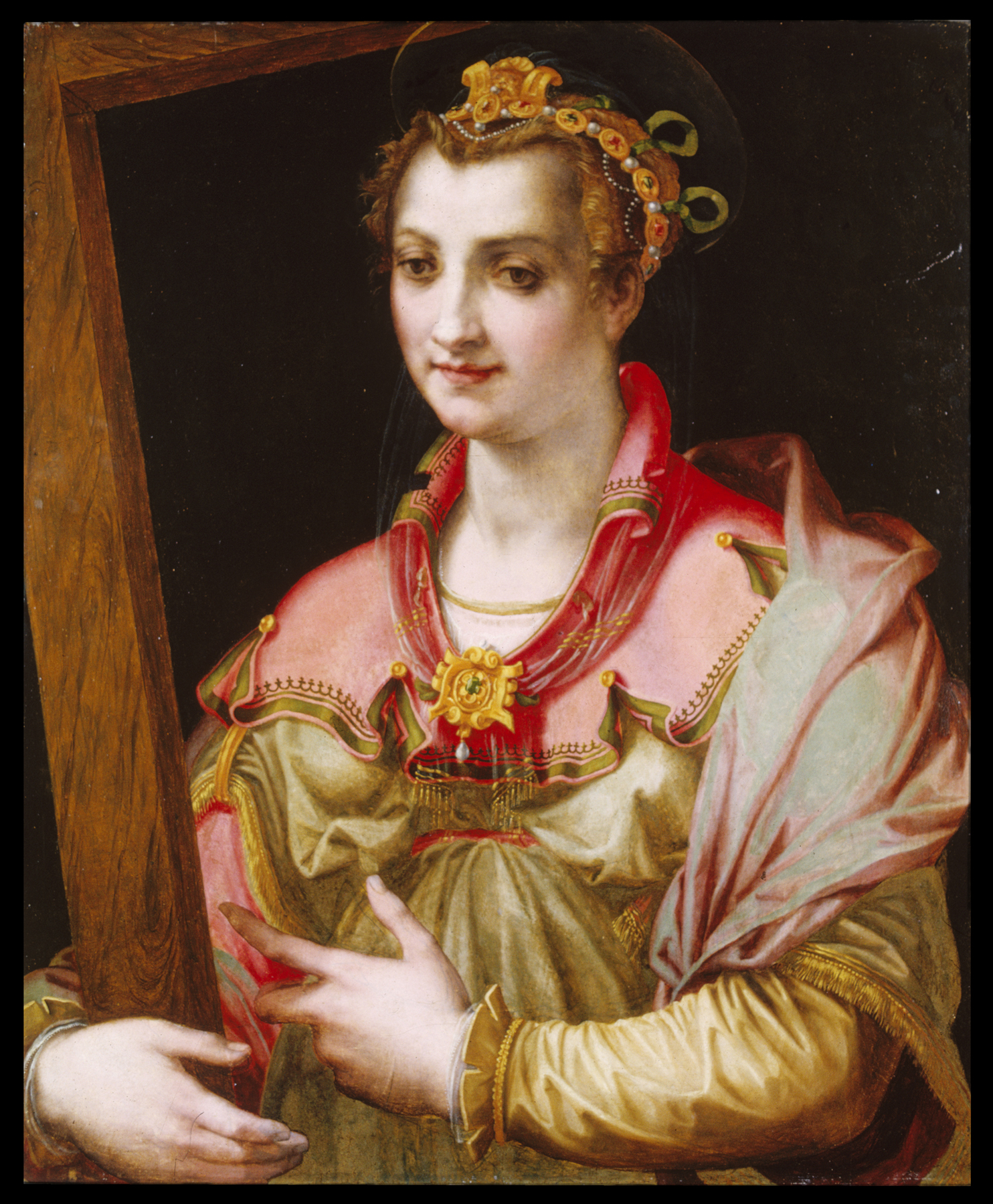Saint Helena
(Renaissance Europe )
St. Helena (ca. 247-ca. 327) was the mother of Emperor Constantine the Great (ca. 288-337), who, according to tradition, christianized the Roman Empire. Helena is shown holding the True Cross (the cross on which Christ was crucified), which she is said to have discovered in Jerusalem. Her elaborate headdress and idealized, slightly masculine facial features reveal the artist's study of Michelangelo's so-called "teste divine" ("divine heads"), admired for their great beauty. Morandini and other Florentine artists of the later 16th century thought of Michelangelo as the greatest artist of all time, and they devotedly imitated his works.
Provenance
Provenance (from the French provenir, 'to come from/forth') is the chronology of the ownership, custody, or location of a historical object. Learn more about provenance at the Walters.
Don Marcello Massarenti Collection, Rome [date and mode of acquisition unknown] [1897 catalogue: no. 115, as Francesco Salviati]; Henry Walters, Baltimore, 1902, by purchase; Walters Art Museum, 1931, by bequest.
Exhibitions
| 1967 | An Exhibition of the Treasures of The Walters Art Gallery. The Walters Art Museum, Baltimore; Smith College Museum of Art, Northampton; Pace Wildenstein Gallery, New York. |
Geographies
Italy, Florence (Place of Origin)
Measurements
Painted surface H: 34 15/16 x W: 28 11/16 x D excluding cradle: 3/4 in. (88.7 x 72.8 x 1.9 cm)
Credit Line
Acquired by Henry Walters with the Massarenti Collection, 1902
Location in Museum
Accession Number
In libraries, galleries, museums, and archives, an accession number is a unique identifier assigned to each object in the collection.
In libraries, galleries, museums, and archives, an accession number is a unique identifier assigned to each object in the collection.
37.1096


